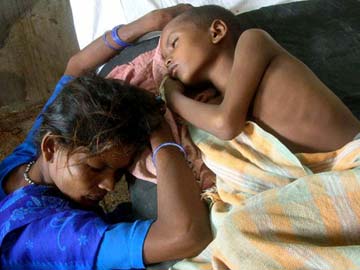
One was found dead in a car that veered off the road. Two others collapsed and died suddenly without warning. All three may have been killed by an infection known for causing long-term misery, but not one usually considered a killer — Lyme disease.
The Centers for Disease Control and Prevention reports Thursday on the cases of three people who literally dropped dead from a heart infection known as Lyme carditis. The two men and a woman were young, aged 26 to 38, and had not been treated for Lyme disease.
And no one suspected an infection until an astute pathologist readying heart tissue for a possible transplant noticed something wrong.
The first case was one of those inexplicable deaths, when a young, seemingly healthy person dies suddenly from heart disease.
“In November 2012, a Massachusetts resident was found unresponsive in an automobile after it veered off the road. No evidence of traumatic injury was found,” the CDC team and state department of health investigators write in the report. The driver was dead.
In the second case, a New York state resident had chest pain and collapsed and died at home last July. This patient did have an unusual heart condition called Wolff-Parkinson-White syndrome, but no one suspected something else might have been involved.
The same month, a Connecticut resident died suddenly while on an out-of-town visit. “The patient had complained of episodic shortness of breath and anxiety during the 7–10 days before death. The patient lived on a heavily wooded lot and had frequent tick exposure; there was no known history of cardiovascular disease,” experts wrote in the report, published in the CDC’s weekly report on disease and death.
All three were tissue donors. A pathologist at the Cryolife tissue lab in Kennesaw, Ga. noticed something unusual when he was examining the heart valve from one of the victims as it was being prepared for a transplant. “He noticed the histopathology was similar to what he had seen in Lyme carditis,” said Dr. Joe Forrester, a CDC epidemiologist in Ft. Collins, Colo. who helped write the report.
The Ft. Collins lab checked the blood; the CDC in Atlanta checked the tissue and found the characteristic Borrelia burgdorferi bacteria. “We began investigating,” Forrester said.
The Massachusetts victim may have had symptoms of Lyme disease. “Interviews with next-of-kin revealed that the patient had described a nonspecific illness with malaise and muscle and joint pain during the two weeks preceding death. The patient lived alone with a dog that was reported to have ticks frequently,” the report reads.
Forrester said the victim almost certainly did not think anything serious was wrong. “If I had muscle aches and joint pains, I don’t know if I would go to the doctor right away,” Forrester told NBC news.
Only four other deaths from Lyme disease have ever been reported, CDC says — two in Europe and two in the United States. “Pathologists and medical examiners should be aware that Lyme carditis can be a cause of sudden cardiac death,” the agency advises.
Lyme disease is common, and this deadly complication remains very unusual. “We believe it’s rare. We are trying to find out how rare,” Forrester said.
CDC says while 30,000 Lyme cases are reported a year, it’s probably much more common than that — perhaps as high as 300,000 cases a year.
It’s most common in Connecticut, Delaware, Maine, Maryland, Massachusetts, New Hampshire, New Jersey, New York, Pennsylvania, Rhode Island, Vermont, Minnesota and Wisconsin.
It’s not clear what the message for the general public might be – people are already cautioned to avoid being bitten by ticks, especially in areas known to have high rates of Lyme disease. Lyme is caused by the bacteria Borrelia burgdorferi and antibiotics usually clear it up. And Forrester says only 1 percent of people infected with Lyme disease get carditis.
There is not a vaccine against Lyme, so CDC recommends using insect repellants — those containing DEET are best — and wearing long sleeves, pants and socks when in wooded areas where ticks might be found.
Source: nbc news











